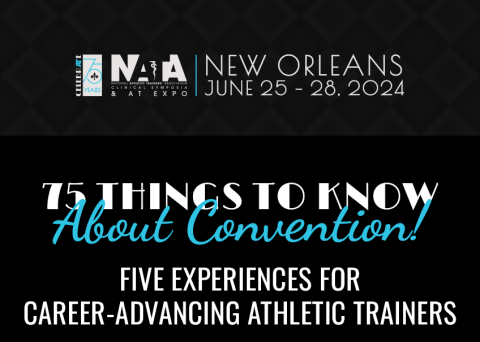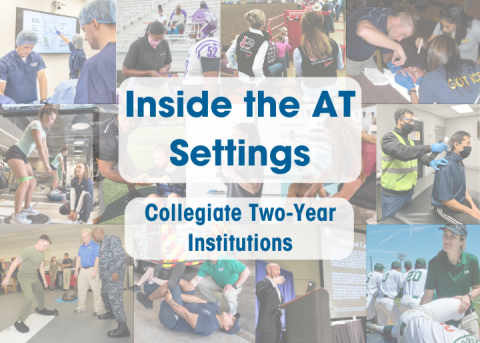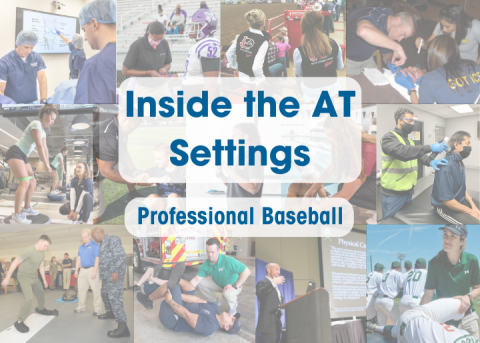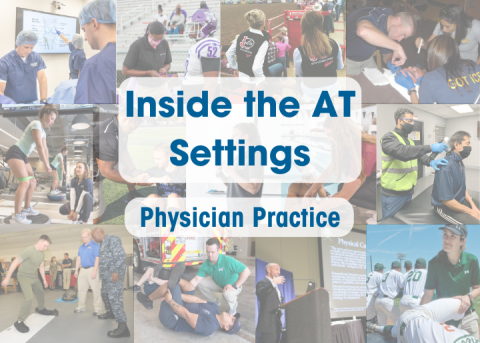
This year, the National Athletic Training Month theme, “From Head to Toe,” highlights the whole-body, whole-person care ATs provide their patients. Throughout March, NATA Now is highlighting members from across the settings. These eight ATs, also featured in the March NATA News, are examples of how ATs are advancing the profession through their direct and indirect efforts.
Rick Griffin, MS, LAT, ATC, former head athletic trainer for the Seattle Mariners, has had an impactful career in the world of athletic training and continues his pursuit to grow the profession to this day. In addition to his 38-year career in professional baseball, Griffin has provided care to rodeo athletes since 1981, most recently providing AT services during the National Finals Rodeo in December 2023.
That first rodeo in 1981 was the Montana Rodeo Circuit finals, and Griffin said the competitors didn’t really want ATs there.
“The cowboys were like, ‘Who are you guys? We don’t need you guys. We don’t even have an athletic training room,’” Griffin said. “They showed us a room [we could use] and it was a broom closet. There was a mop and broom in there and a chair.”
At that event, Griffin and a doctor from the Mariners were the only medical personnel available to provide care, but the competitors gave them the cold shoulder. Things changed when a cowboy with a shot at the saddle bronco title sprained his thumb.
“He finally walked up to me and said, ‘Is there anything you can do to help me because I have to ride the next two days? I have a chance to win the championship here, but if I don’t ride, I can’t win,’” Griffin said.
Griffin worked on the cowboy that day and the next. The cowboy was able to ride and ended up winning the competition. He told other competitors, who then started coming to Griffin and his team.
Over the years working with rodeo athletes, Griffin has seen many changes in the sport’s safety, such as helmets and padded vests for bull and bronco riders. He said most rodeo athletes today are more willing to wear safety equipment than those of the past. Given that rodeo can be a family sport, sons have seen the horrific injuries their fathers and grandfathers have endured in the rodeo ring.
“You can go back and look even 10 years ago, and if you watch the bull riding event, the majority of the guys did not wear helmets,” Griffin said. “They just wore hats. Wearing helmets is so important for the protection of the bull riders, and the majority of them also wear vests.”
Griffin and other rodeo ATs published a study about neck injuries related to bronco riders that led to many riders now wearing cervical collars during competition to prevent those injuries. Griffin also helped author articles to help prepare ATs and physicians for the injuries they could see in rodeo.
“I did that for myself, too, because I wanted to be prepared,” Griffin said. “Whatever setting that you're going to be working in, you need to be prepared and you need to read and find out everything that you can, so that when you do show up for that first day of work, you know what you're getting yourself into.”
When it comes to treating athletes “From Head to Toe,” Griffin said in his baseball career, he mostly worked on upper extremity injuries, such as torn rotator cuffs and elbow problems; he sees similar injuries in rodeo athletes that do roping events. But with the rodeo, he is truly providing whole-body care.
“In any given event, or any given ride, something could happen to your head, to your ankle, to your foot, to your back,” Griffin said. “You have to be alert. You have to be very watchful of what's going on. You have to anticipate the injury before it happens, so that you can be prepared to provide the care that they need.”
Rodeo has a competition circuit, sending competitors all over the country, Griffin said. This means an AT may not know all the injuries and treatments a competitor has had throughout the season.
“You might have a guy one day, and you might not see him again for another two months, and in between he's going to be in 15 or 20 rodeos,” Griffin said. “You don't really know what happens to him when he leaves.”
The National Finals Rodeo and other circuits are working to introduce an injury tracking system, Griffin said. The system would provide ATs across the country an idea of who is coming into the training room along with previous injuries.
“It's going to be a great thing for the athletic trainers when the athletes come to the next rodeo,” Griffin said.





